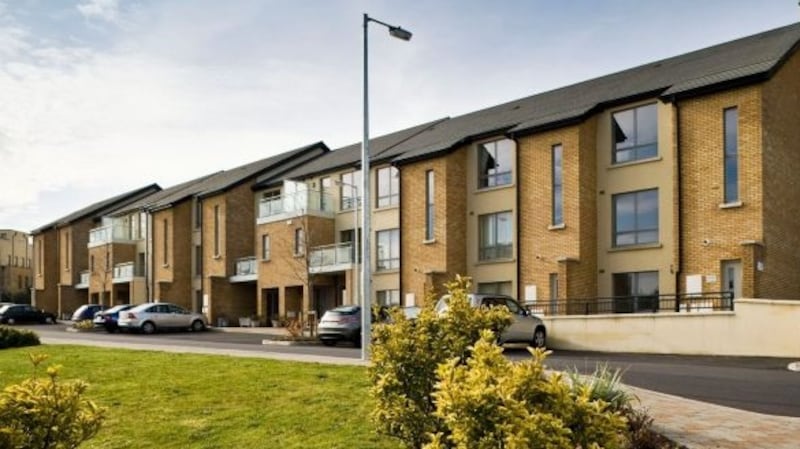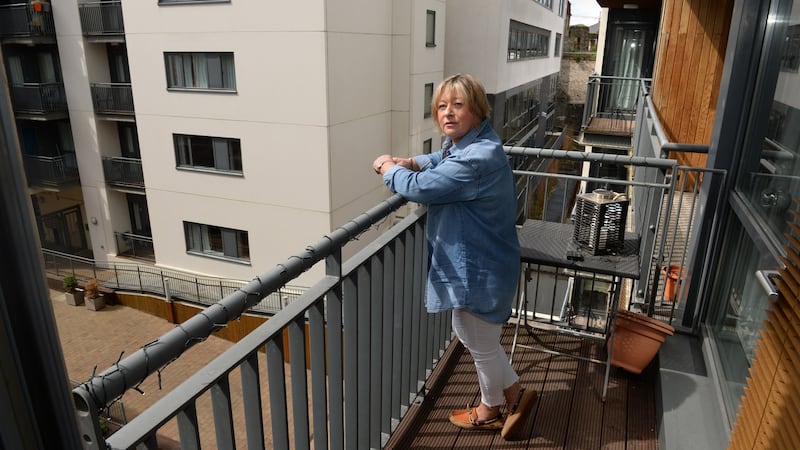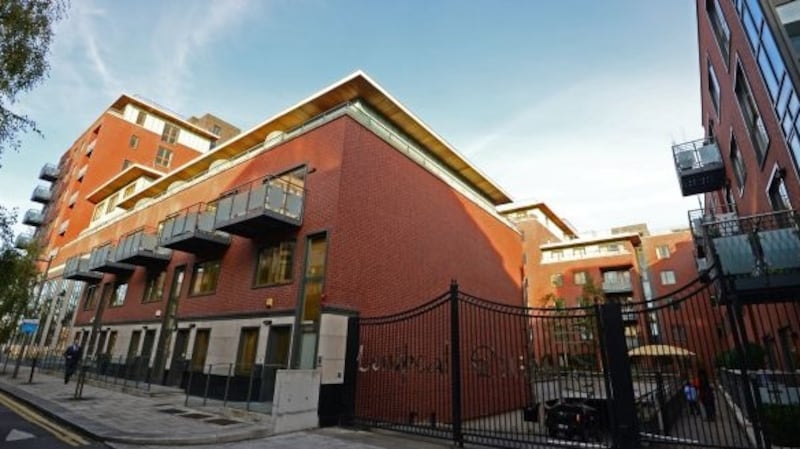St James's Wood, Kilmainham, Dublin 8. Built in 2000: News of fire-safety defects at this complex first came to light in The Irish Times in December 2018, when it emerged apartment owners there were facing a €3 million bill for remediation.
St James's Wood was constructed in 2000 by the Cosgrave Property Group and apartments were first sold for between £175,000 and £250,000 (€222,000 -€317,500). A series of fire-safety reports showed multiple and widespread problems, including deficient lighting and alarm systems and walls that would not contain a fire in one of the apartments for the required length of time.

Following reports in The Irish Times, the fire officer conducted an examination of the site and chose not to vacate the property. Owners were given a revised bill of €1.78 million, with their first instalment due by February 19th, 2019. Works have not yet commenced on site.
Holywell, Swords, Co Dublin. Built in 2002: Units in Holywell, near Swords, sold for almost €500,000 during the boom, but by 2012 Fingal County Council had commissioned an expert report to look into systemic shortfalls in fire separation systems after concerns were raised during a routine maintenance inspection.
Eleven defects were found by the report authors, including non-completion of fire-stopping, openings cut in a wall to mount gas boilers, serious non-compliance in the location of gas risers, and fire-resistant plasterboard not being carried to the full height of walls.
Fingal County Council paid between €15,000 and €20,000 per unit to repair 44 apartments it had let as social housing. It later emerged that the local authority was made aware of fire-safety concerns at the development five years before it commissioned the report – following a fire in January 2007 – and that concerns over the development had been discussed with the Department of the Environment and between council officials that year.
Riverwalk Court, Ratoath, Co Meath. Built 2002: Riverwalk Court, a scheme of 16 duplexes and 26 apartments, was built in 2002 by developer Michael Ryan's Saltan Properties. Meath County Council was informed of defects at the estate in 2011, including lack of fire-stopping material between walls and structural failures in the "compartmentalistion" of common areas designed to prevent of fire. The development was said to require more than €1.5 million worth of remedial work.
Foxford Court, Lucan, Co Dublin. Built in 2004: Foxford Court was built by Newlyn Developments for South Dublin County Council in 2004.
In 2013 the development was found to have no fire-stopping between apartments and to lack essential fire-safety protections. The report, carried out by Health and Safety Services, Training and Consultancy Ltd, called for "immediate remedial works to install fire-stopping where required".
Following the report, residents sought help from the council, which refused to take action saying the dwellings were privately owned and safety issues were not its responsibility.
Newlyn agreed to appoint a contractor to carry out remediation works. The standard of works was certified by the fire safety officer and the developer made a financial contribution to the cost of the works.
Spencer Dock, Dublin 1. Built in 2004: Built beside the Samuel Beckett bridge and adjacent to Dublin's conference centre and the IFSC, the Spencer Dock apartments were among the most sought-after of the late Celtic Tiger period.
One-bedroom apartments built by Treasury Holdings and starting at €315,000 were drip-fed into the market in 2004, with three-bedroom units initially priced at up to €665,000. It was described as a "truly metropolitan place to live", with patios and large balconies; booking deposits of €20,000 were required from prospective buyers, with car-parking spaces costing an extra €40,000 each.
However, the apartment blocks have, in recent years, faced issues. Inspections across more than 150 apartments have reportedly shown window and balcony issues, leaks and condensation, as well as problems relating to water ingress around window frames.
Carrickmines Green, Dublin 18. Built in 2005: This development was built in 2005 by Alan Hanly of Largan Developments. The apartments sold for between €300,000 and €800,000 at their peak, until the property crash came and Largan went bust, leaving the estate half-finished. Structural inspections, first carried out in 2010, revealed water ingress, damp, flooding and missing fire-stopping materials.

Beacon South Quarter, Sandyford, Dublin 18. Built in 2005: More than 800 apartment owners at the Sandyford development in south Dublin were hit with a €10 million bill at the beginning of 2017 in relation to fire-safety works.
The move followed a warning by Dublin Fire Brigade that owners could face legal action if they did not undertake fire-safety works at their homes.
The city's chief fire officer, Patrick Fleming, had written to owners to say the fire brigade had been alerted to "fire deficiencies" in the development, built in 2005 by developer Paddy Shovlin's Landmark Enterprises.

[ Cathedral Court, Dublin 8. Built in 2006:Opens in new window ]
This apartment block was built by developer Sherborough Enterprises Limited, a company which is controlled by members of the family that owns the O’Callaghan hotel group.
Some of these apartments sold for up to €575,000, with car parking spaces costing an additional €40,000. When the crash came, however, Sherborough decided to hold on to a majority of units at the site. SEL still owns 64 of the 104 apartments, and uses them for luxury lettings.
In May 2019 The Irish Times revealed how SEL told owners it expected them to pay their share of the remediation work required at the site due to defective building practices.
A building surveyor’s report found problems with a large number of balconies at the site in 2016, while a fire safety survey last year also found a number of fire-stopping shortcomings.
The €563,350 bill to rectify these problems would result in a €5,000 fee for each apartment owner.
Belmayne, Dublin 13. Built in 2006: The development near Darndale in north Dublin encapsulated the boomtime spirit when it was launched in 2006. An infamous advertisement for the scheme showed a scantily-clad model draped over a kitchen surface. It promised "Gorgeous Living", and it was launched by British celebrity couple Jamie and Louise Redknapp.

In 2011, Belmayne was used to accommodate some of the residents of nearby Priory Hall who were moved out of that complex due to fire safety concerns. However, it wasn't long before problems arose at hundreds of units at Belmayne. Since then, at least three separate reports have cast doubt over the status of fire safety and balcony design at Belmayne, while residents face an uncertain future, fearing that they will be landed with enormous bills on top of years of mental stress.
[ Simonsridge, Sandyford. Built in 2006.Opens in new window ]
Simonsridge in Sandyford, Co Dublin was built in 2006 by developer Shannon Homes. There are 632 homes at the site.
In March 2019 The Irish Times revealed Dublin Fire Brigade had ordered the developer to conduct a full fire-safety review after concerns were raised by an investigation undertaken at the scheme.
A preliminary investigation by management company KPM uncovered a range of potential fire safety issues in common areas, as well as other structural and fire-stopping elements.
Residents at Simonsridge, a major development which spans several sub-estates, were also asked to volunteer as fire wardens in order to maintain an increased level of vigilance.

Ath Lethan, Dundalk, Co Louth. Built in 2005: Residents at this Co Louth apartment block, built in 2005 by McGreevy Enterprises, were told by the fire officer in April 2016 they would be evicted unless €1.4 million in fire safety works were carried out. Details of the defects emerged the month previously in a fire-safety report commissioned by a potential purchaser of a number of apartments in block A.
The report from Pro-Fire & Design refers to cavity barriers not being "provided as outlined in the granted fire safety certificate application". It noted "numerous issues where there were penetrations through fire rated walls and floors that were inadequately firestopped to maintain the integrity of the fire rated walls and floors".
Hyde Square, Dublin 8. Built in 2005: The roof of one of the blocks at the Hyde Square apartment complex in Kilmainham is currently being held together with push/pull ties because the plywood underlay is disintegrating and the roof canopy is not properly secured to the building's walls.
Surveyors have also found issues with fire safety because the roof was not properly compartmentalised or insulated, meaning a fire could spread there faster than it should. These problems are also present in two other blocks at the complex, though they are not as severe.
Owners are now facing bills of up to €10,900 each to fix these problems. The development was launched off plans in 2005, with the final phase sold at the end of 2007 at prices upwards of €335,000.
Hyde Square was developed by Megard Ltd, who sub-contracted the building work to Galway-based firm Purcell Construction, which has an office on the Hyde Square site.
The current directors of Megard Ltd, Gerald and Mary Purcell, were also the directors of Purcell Construction until 2006, when the directorship changed.
Millfield Manor, Co Kildare. Built in 2006: A fire spread through six terraced houses at Millfield Manor estate in Newbridge, Co Kildare within 25 minutes on March 31st, 2015. Nobody was injured during the blaze.
A report, which examined a number of homes on the estate, released last year found they were not in compliance with building regulations.
The report raised concerns about the potential spread of fire between the dwellings and found poor workmanship. Millfield Manor was built in 2006 by Barrack Construction, a company which went into receivership in May 2012. Minister for Housing Eoghan Murphy said last September that the department was working with Kildare County Council to estimate costings to ensure "residents can make informed decisions and seek value for money regarding any potential remediation works to their properties".
The Laurels, Dundrum, Dublin 14. Built in 2006: The Laurels, an upscale development which overlooks Dundrum Town Centre, was built between 2006 and 2008 by Tuskar Property Holdings and Pierse Construction. This developer was a precursor to a company called Tuskar Asset Management which collapsed in 2009 with debts of about €50 million.
The scheme was vacated in July 2012 after the management company found it was in breach of fire regulations. All residents were renters, not owners, as the complex was owned by a group of about 40 individual investors. The complex was sold in 2013 for just over €7million, with the remediation bill for the new owner estimated at between €4 million and €5 million.
Longboat Quay, Dublin 2. Built in 2006:Concerns over fire safety in this Dublin docklands complex – built by developer Bernard McNamara in 2006 – arose in February 2015. When repairs were not carried out by the following October, Dublin Fire Brigade issued a fire-safety notice ordering that work, including the installation of a smoke ventilation system and fire-stopping materials, be done.

Dublin City Council owned common areas in Longboat Quay and had an interest in the 37 apartments bought under the affordable housing scheme.
The council agreed to contribute €1.85 million in December 2016 for the remedial work, while receivers to developer Bernard McNamara's building company, Gendsong, agreed to pay €1.25 million to fund the repairs.
Marrsfield Avenue, Clongriffin, Dublin 13. Built in 2007: Apartment owners at Marrsfield Avenue in Clongriffin face a bill of €826,000 to remedy serious fire-safety issues found at the block. Marrsfield Avenue was built in 2007 by Pierse Homes, a developer which went into liquidation in 2010 with debts of €212 million.
It has since emerged that the apartments on Marrsfield Avenue did not comply with the fire-safety certificate granted for the block.
A report from McGovern Surveyors, seen by The Irish Times, details a lack of fire-stopping in many areas, such as within the cavities which carry waste pipes and run vertically through multiple apartments, and in the openings of lift shafts; as well as around electrical meter cabinets and in waste-pipe cavities in the underground car park.
Residents have been told that a fire would not be contained within any compartment for more than 30 minutes. It should be able to contain a fire for 60 minutes in order to give residents time to get out safely.
Minutes from the management company’s meetings show that this work – which was due to begin in February 2019 and take four months to complete – will result in a fee of between €4,246 and €6,676 per apartment.
Priory Hall, Dublin 13. Built 2007: More than 250 people were evacuated from the Priory Hall apartment scheme near Donaghmede in north Dublin because of fire-safety risks in October 2011.
The complex was built in 2007 by developer and former IRA hunger striker Thomas McFeely. Residents were evacuated by court order, while McFeely was declared bankrupt by the Supreme Court in July 2012.
In October 2013, Dublin City Council agreed to undertake the refurbishment following an 18-month mediation process involving residents and banks, chaired by retired Supreme Court judge Mr Justice Joseph Finnegan.
In 2013, then taoiseach Enda Kenny said: "Priory Hall, in my view, is the worst of what occurred in the so-called Celtic Tiger years where people, through no fault of their own, were effectively put into houses that were death traps."
After the remedial works were complete, the first batch of apartments in what is now called “New Priory” were put up for sale by the council in November 2017. McFeely is due to exit bankruptcy in March 2020.













